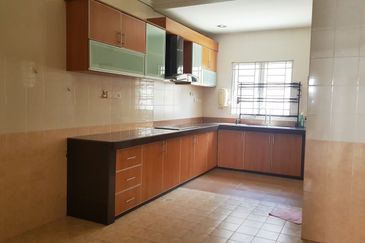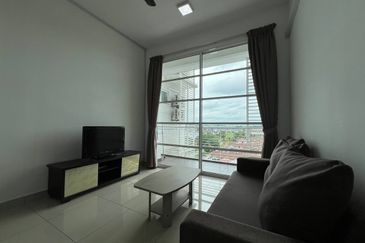
STUDENT accommodation, once considered a niche sector, has emerged as one of the most sought after. Last year, Temasek’s wholly-owned subsidiary Mapletree Investments went on a shopping spree. In May, it snapped up a portfolio of 25 student housing assets with 5,500 beds in the UK for reportedly £417 million (S$731 million). Then, in November, it purchased seven student housing properties in the US — with about 6,000 beds — for US$653.2 million (S$911 million) (RM2,891).
On March 21, Mapletree announced that it had successfully closed the Mapletree Global Student Accommodation Private Trust (MGSA P-Trust), the first trust in Singapore that focuses on the sector. It raised US$535 million in equity, and has a global portfolio of 35 assets with more than 14,000 beds across 22 cities in the UK and the US, worth a total of US$1.3 billion.
Mapletree was neither the only Singapore group nor the first to enter the student housing market on a global scale. Sovereign wealth fund GIC has been investing in student accommodation since 2014.
On March 18, GIC, along with its two joint venture partners, Canada Pension Plan Investment Board and The Scion Group, bought three US student accommodation portfolios for about US$1.6 billion. The JV has invested US$2.9 billion in acquisitions and has a US portfolio of 48 student accommodation communities in 36 university markets, comprising 32,192 beds.
In February, GIC and its JV partner UK developer Unite Students purchased Aston Student Village in Birmingham, for £227 million. Aston Student Village has more than 3,000 beds. Last September, GIC and Dubai-based GSA acquired a portfolio of nine student housing projects in the UK from funds managed by Oaktree Capital Management LP. The purchase includes nine buildings with 3,634 beds, and five developments that will add more than 3,500 beds once completed.
Last year, investments in student housing in the UK totalled £2.7 billion, according to CBRE UK. The level surpassed the £2.4 billion recorded in 2014.
Building logistics portfolio
GIC has not been bulking up on only student accommodation assets in the US and Europe, but on logistics properties as well. Last November, it acquired one of Europe’s largest developers and managers of logistics properties, P3 Logistic Parks, for €2.4 billion.
In December, Singapore-listed Global Logistic Properties established a US$1.5 billion fund for the purpose of buying US logistics assets in the next three years. GLP, which is majority-owned by GIC, is one of the world’s biggest logistics companies through acquisitions.

![Siew: Singapore investors continue to seek investments in the US in anticipation of its better economic growth, [among other things]. (Photo by The Edge Singapore) Siew](http://dbv47yu57n5vf.cloudfront.net/s3fs-public/editorial/my/2017/April/06/Siew.jpg)
Demand for logistics properties in the US has grown with the global expansion of e-commerce. “You have a growing economy, so consumers are shopping more online,” says Christopher R Ludeman, CBRE global president of capital markets. “Manufacturers are building their manufacturing base and need more modern distribution warehouses for e-commerce.”
In the US, student housing and logistics properties have average yields of 5% to 6%, says Yvonne Siew, CBRE executive director of global capital markets, Asia-Pacific. Meanwhile, office assets have average yields of 4% to 5%, she estimates.
Avenues for multifamily, corporate housing
Besides logistics, Ludeman believes there are also opportunities in multifamily housing, such as apartment blocks and townhouses. Student housing is also a subset of multifamily real estate,
but it has attracted increased interest from institutional investors, especially given its resilience during economic downturns, he adds.
Last year, offshore investors pumped nearly US$7.3 billion into multifamily products in the US, according to JLL in its 4Q2016 report on the multifamily investment outlook. The investment level is second only to the record year in 2015, when US$13.4 billion went into multifamily assets.
Canadian investors accounted for US$3 billion (41.8%) of total foreign investment volumes into multifamily housing in 2016. Middle Eastern capital remains active in this sector; Asian-based capital has emerged as a force to be reckoned with, especially following Mapletree’s acquisition of a portfolio of the seven student housing properties last November, says JLL.
In February, Mapletree acquired Oakwood Worldwide, its partner and the world’s largest provider of corporate housing and serviced apartments. Mapletree’s partnership with Oakwood started in 2014, when the duo signed a S$5 billion JV deal to open more than 100 new properties worldwide in five years. At the same time, Mapletree took a 49% stake in Oakwood Asia Pacific.
“Our full ownership of Oakwood will allow us to enhance efficiencies and the growth momentum of our corporate housing and serviced apartment business,” Hiew Yoon Khong, Mapletree group CEO, said in a statement.
US still favoured destination for Asian capital
The US remained the most favoured destination for Asian capital last year, drawing 43% of total investments, according to CBRE in its Feb 28 report. Europe ranked second with 27%, and intra-regional investments in Asia were next, with 23%.
Chinese investors were the biggest group of overseas property investors from Asia last year, accounting for US$28.2 billion (47%) worth of deals. Singapore-based investors ploughed a total of US$12 billion into overseas property, and ranked among the top four biggest offshore real estate investors, along with China, Hong Kong and South Korea.

There are key differences in investor behaviour. “I would say Singapore investors are more studious,” says CBRE’s Ludeman. “They are very thoughtful and cautious when looking at their investment strategies.”
New York surpassed London as the top metropolitan destination for outbound investment in 2016, albeit at a smaller share than in 2015. More capital was also deployed to alternative gateway cities in search of attractively priced opportunities, such as France and the Netherlands in Continental Europe; Chicago, San Francisco and Washington in the US; and Vancouver in Canada.
Interest rate hike unlikely to disrupt US investments
The much-anticipated hike in interest rates by the Federal Reserve is unlikely to disrupt investments into the US, says CBRE’s Siew. “Singapore investors continue to seek investments in the US in anticipation of its better economic growth, potential tax cuts and the likelihood of a relaxation of regulatory requirements.”
The biggest risk for many global investors is uncertainty, says Ludeman. In Europe, the Dutch election last month resulted in a four-party coalition government, and the French will go to the polls to vote for a new president in April. Meanwhile, the German federal election is scheduled for September. “And the second shoe has yet to fall in the UK with respect to Brexit,” says CBRE’s Ludeman.
In the meantime, a record US$144 billion of dry powder allocated to the US in 2017 is waiting to be invested, adds Ludeman. “On a relative scale, the US seems to be attracting more global capital.”
This article first appeared in The Edge Property Singapore, a pullout of The Edge Singapore, on April 3, 2017.
For more stories, download TheEdgeproperty.com pullout here for free.
TOP PICKS BY EDGEPROP

Avenham Garden @ Eco Grandeur
Bandar Puncak Alam, Selangor

Gateway 16, Bandar Bukit Raja
Bandar Bukit Raja, Selangor

Bandar Botanic
Bandar Botanic/Bandar Bukit Tinggi, Selangor

Horizon Residence (Dwi Mutiara)
Bukit Indah, Johor

Pan Vista, Bandar Baru Permas Jaya
Permas Jaya/Senibong, Johor




















